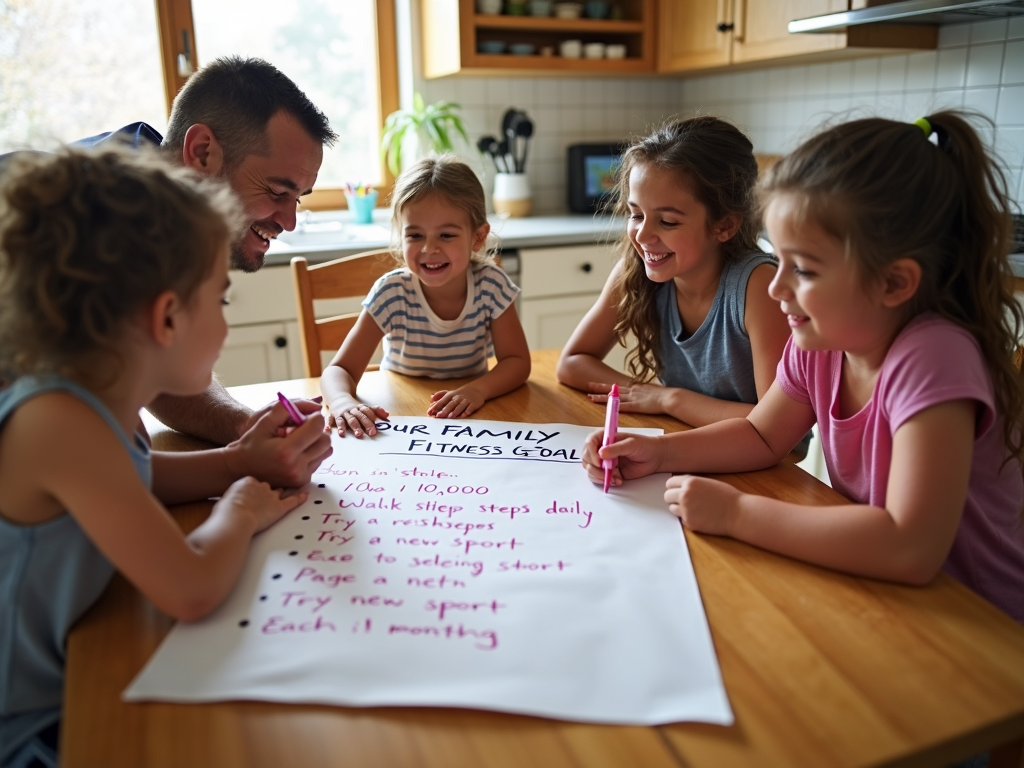Building a family fitness program is an excellent way to promote health, strengthen bonds, and create lasting memories. By incorporating regular physical activity and healthy eating habits into your family's routine, you can set the foundation for a lifetime of wellness. This guide will walk you through the process of creating a comprehensive family fitness program that is enjoyable, sustainable, and tailored to your family's needs.

Why Start a Family Fitness Program?
Engaging in physical activity as a family offers numerous benefits:
- Improved Health: Regular exercise helps prevent chronic diseases, boosts immunity, and enhances overall well-being.
- Quality Time: Working out together provides an opportunity to bond and create shared experiences.
- Role Modeling: Parents who prioritize fitness set a positive example for their children.
- Fun and Motivation: Group activities can make exercise more enjoyable and encourage consistency.
According to the Centers for Disease Control and Prevention (CDC), children and adolescents should engage in at least 60 minutes of physical activity daily, while adults need at least 150 minutes per week. A family fitness program can help meet these recommendations while fostering a supportive environment.
Step 1: Set Family Fitness Goals
Before diving into activities, it's essential to establish clear, achievable goals. Consider the following:
- Individual Needs: Assess each family member's fitness level, interests, and any health concerns.
- Shared Objectives: Decide on common goals, such as improving endurance, building strength, or simply having fun.
- Realistic Expectations: Set attainable targets to avoid frustration and ensure long-term commitment.
For example, a family might aim to complete a local 5K run together or to incorporate 30 minutes of physical activity into their daily routine.

Step 2: Choose Engaging Family Fitness Activities
Selecting the right activities is crucial for keeping everyone motivated. Here are some ideas:
Cardio Workouts for Beginners at Home
- Family Walks or Hikes: Explore local trails or parks.
- Dance Parties: Turn on music and dance together in the living room.
- Jump Rope Challenges: See who can jump the longest or learn new tricks.
Strength and Flexibility Exercises
- Yoga Sessions: Follow online family-friendly yoga videos.
- Bodyweight Circuits: Include exercises like squats, push-ups, and planks.
- Stretching Routines: Incorporate stretching to improve flexibility and prevent injuries.
Fun and Games
- Obstacle Courses: Set up a course in the backyard or living room.
- Sports: Play soccer, basketball, or tag in the park.
- Active Video Games: Use gaming consoles that promote movement.
Remember, the key is to make exercise enjoyable. Let each family member suggest activities to ensure everyone feels involved.

Step 3: Create a Family Fitness Schedule
Consistency is vital for any fitness program. Develop a schedule that fits your family's lifestyle:
- Daily Routines: Incorporate short bursts of activity, like a 10-minute morning stretch or an evening walk.
- Weekly Plans: Designate specific days for different activities, such as 'Workout Wednesdays' or 'Sports Saturdays.'
- Flexibility: Allow for adjustments based on weather, school events, or other commitments.
Use a shared calendar or a visual chart to track progress and keep everyone accountable.
Step 4: Incorporate Healthy Nutrition
A balanced diet is essential for supporting an active lifestyle. Here are some tips:
Healthy Snack Ideas for Active Kids
- Fruit Smoothies: Blend fruits with yogurt or milk for a nutritious drink.
- Veggie Sticks with Hummus: Carrot, cucumber, and bell pepper sticks paired with hummus.
- Homemade Energy Bars: Make bars with oats, nuts, and dried fruits.
- Cheese and Whole Grain Crackers: A protein-rich snack for after workouts.
Balanced Meals
- Include Lean Proteins: Chicken, fish, beans, or tofu.
- Whole Grains: Brown rice, quinoa, or whole wheat bread.
- Plenty of Vegetables and Fruits: Aim for a variety of colors and types.
Hydration is also crucial. Encourage everyone to drink water throughout the day, especially before, during, and after exercise.

Step 5: Make It Fun and Sustainable
To ensure your family fitness program lasts, focus on enjoyment and adaptability:
- Celebrate Milestones: Acknowledge achievements, no matter how small.
- Mix It Up: Regularly introduce new activities to prevent boredom.
- Involve Everyone: Let each family member take turns choosing the activity.
- Be Positive: Encourage effort over perfection and celebrate participation.
Personal Insight: Our family started a 'Fitness Friday' tradition where we try a new activity each week. From trampoline parks to rock climbing, it's become a highlight of our week and something we all look forward to.
Summary
Building a family fitness program is a rewarding endeavor that promotes health, happiness, and togetherness. By setting clear goals, choosing engaging activities, creating a consistent schedule, and supporting it with healthy nutrition, you can create a program that works for your family. Remember, the journey is just as important as the destination—enjoy the process and the time spent together.
For more information on family health and fitness, check out these resources: - American Heart Association: Family Fitness - National Institute of Health: Physical Activity for Families
Discuss Here